[home] [weblog] [science] [people] [station] [ny-ålesund] [sightings] [sitemap] [nederlands]

| [home] [weblog] [science] [people] [station] [ny-ålesund] [sightings] [sitemap] [nederlands] | more pages with this keyword at the end of this page  |
visit to new island | 14 April 2018 | |
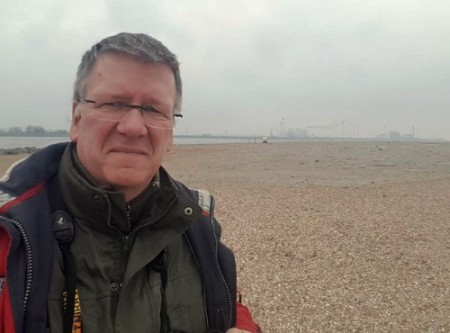 |
Today, I went with two experienced mudflat hikers to the new breeding island for arctic and common terns next to industrial area the Eemshaven. The island is custom made as compensation for nest disturbances inside the industry area. Arctic terns and the Wadden Sea have the highest possible protection status and any disturbance requires compensation by law. We are expecting the first arctic terns to arrive within a week. In the meanwhile it is important that the island is not visited by the general public, so terns and gulls feel undisturbed. In this area terns have been ringed with individual colour rings by Derick Hiemstra for more than ten years. This situation is unique to study the displacement of the terns to new breeding areas. That is why researchers will monitor the breeding birds. There are two bird observation hides on the island and we will use automatic cameras to observe nests and ringed individuals. Though most of the information on this website concerns arctic activities, this study has a clear link with the studies on Spitsbergen. Spitsbergen is the northern breeding place of arctic terns, while the Wadden Sea is the most southern breeding place of their range. The arctic terns in the Eemshaven have the longest migration route as they fly to the Antarctic, south of Tasmania in winter. New island colonisation is also happening in the Arctic as glaciers retreat and new islands appear. | |
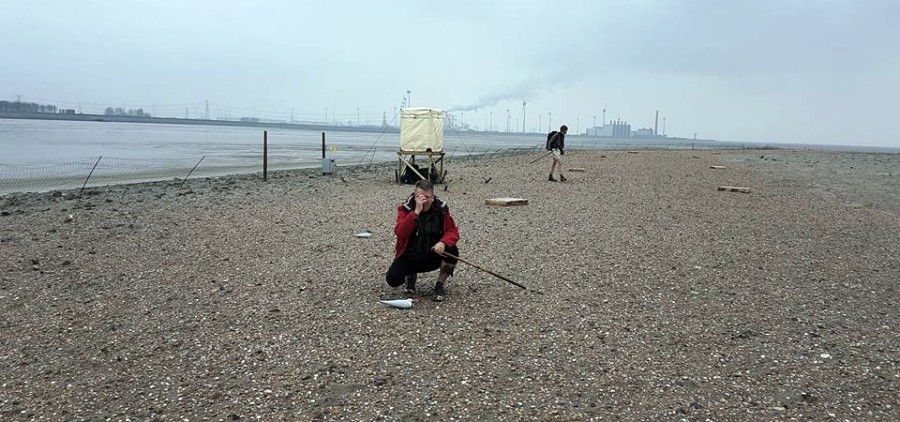 | ||
| In the background the industry in the Eemshaven with three electricity plants, many windturbines, trade and datacenters (e.g. Google). | ||
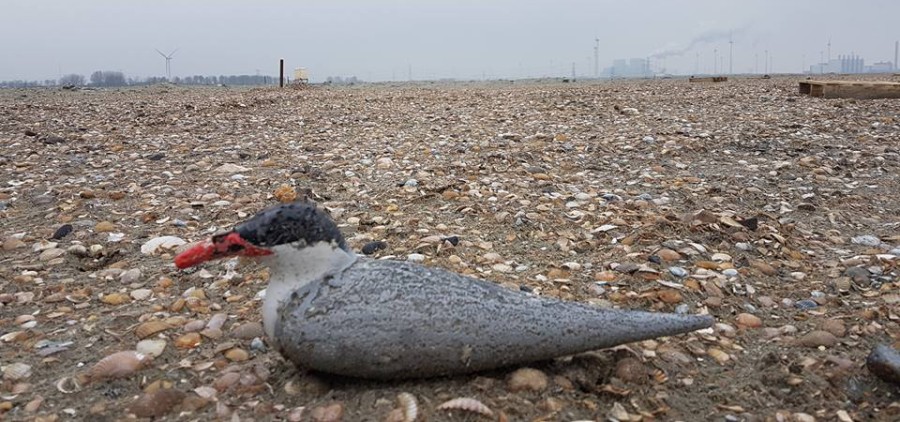 | ||
| On the island, there are models placed in groups to attract terns but also allow a study into their attractiveness. Wooden pallets should provide some shelter for the chicks against avian predators. An electrical fence should keep terrestrial predators off during extreme low tides. | ||
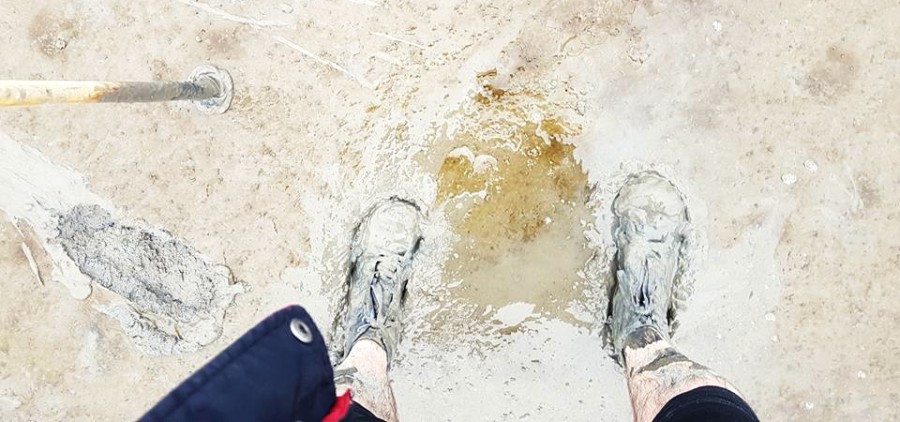 | ||
| Mud hiking in the Dutch Wadden Sea. A special sport. I was accompanied by two friends who are experienced, well prepared and licenced. Knowledge on the tides and safety procedures are important. | ||
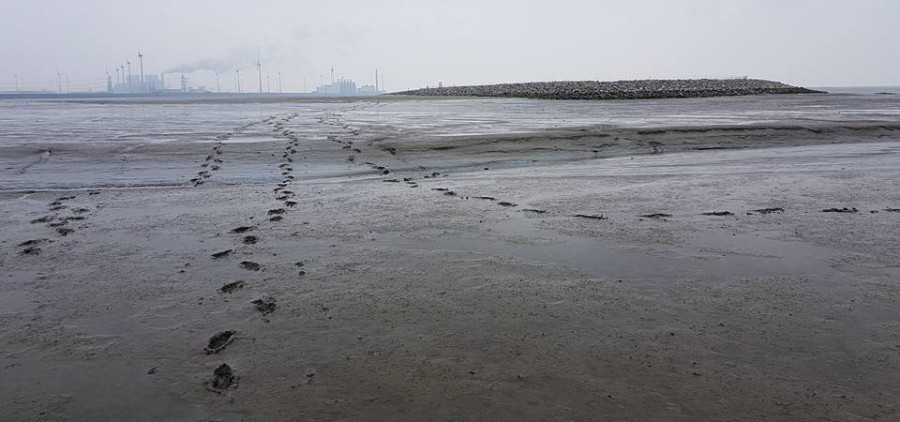 | ||
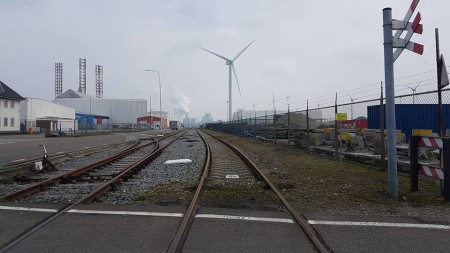 |
While the island should becomne a carrot for nesting terns, the industry area should be less favourable. Despite all activity, for many years the industry area was the most successful breeding colony in the Dutch Wadden Sea. The arctic terns were nesting on a grassy area, fenced off and heavily grazed by rabbits to keep the vegetation short. A nearby black headed gull colony and nesting common terns on the roofs and the unused railway provided extra protection for the terns. We use a stick and carrot approach. But the stick requires some action before the terns arrive. The railway needs to be covered with plastic and the roofs need to be covered with netting. As soon as a tern would start to nest here, any additional disturbance is forbidden by law. The netting on the roof is particular sensitive. We have seen some incidences of terns dying because they were caught in in-proper placed nets. Law enforcement will inspect the nets during the breeding season. | |
|
The province of Groningen has played a very important role in finding a solution for the problem. They have our big gratitude. We hope again for full access bij Groningen Seaports and the local compagnies to the industry during the breeding season to support our monitoring activities.
More posts about the arctic tern on Spitsbergen, in the Eemshaven or the crowd funding can be found by clicking on these blue links. | ||
pages with keyword arctic tern
|
[home] [weblog] [science] [people] [station] [ny-ålesund] [sightings] [sitemap] [nederlands] | click on a picture for more information |
select a new keyword | |
| choose a keyword from the list in this box: | |
[360 video] [aquaria] [archaeology] [arctic fox] [arctic tern] [arcticexplorer.nl] [artist] [atmospheric research] [aurora borealis] [barnacle goose] [birdhealth] [catching] [cemetery] [common eider] [dogs] [eemshaven] [expedition] [faeces] [fish] [fjordcount] [geolocator] [geology] [geopolitics] [glaciers] [glaucous gull] [global warming] [gps-collar] [grouse] [guillemot] [history] [houses] [imprinting] [insects] [instructions] [kittiwake] [landscape] [limnology] [moult] [nest checking] [netherlands] [new species] [party] [people] [permafrost] [pink-footed goose] [plankton] [plants] [podcast] [polar bear] [pollution] [postmaster] [press] [publication] [reindeer] [ring reading] [rocket] [safety] [science] [seal] [skua] [snow] [snowbunting] [space research] [station] [streetview] [sustainability] [teaching] [tourism] [town] [unusual birds] [veterans] [video] [visitors] [waders] [whale] [wildlife camera] [young polar scientist] |